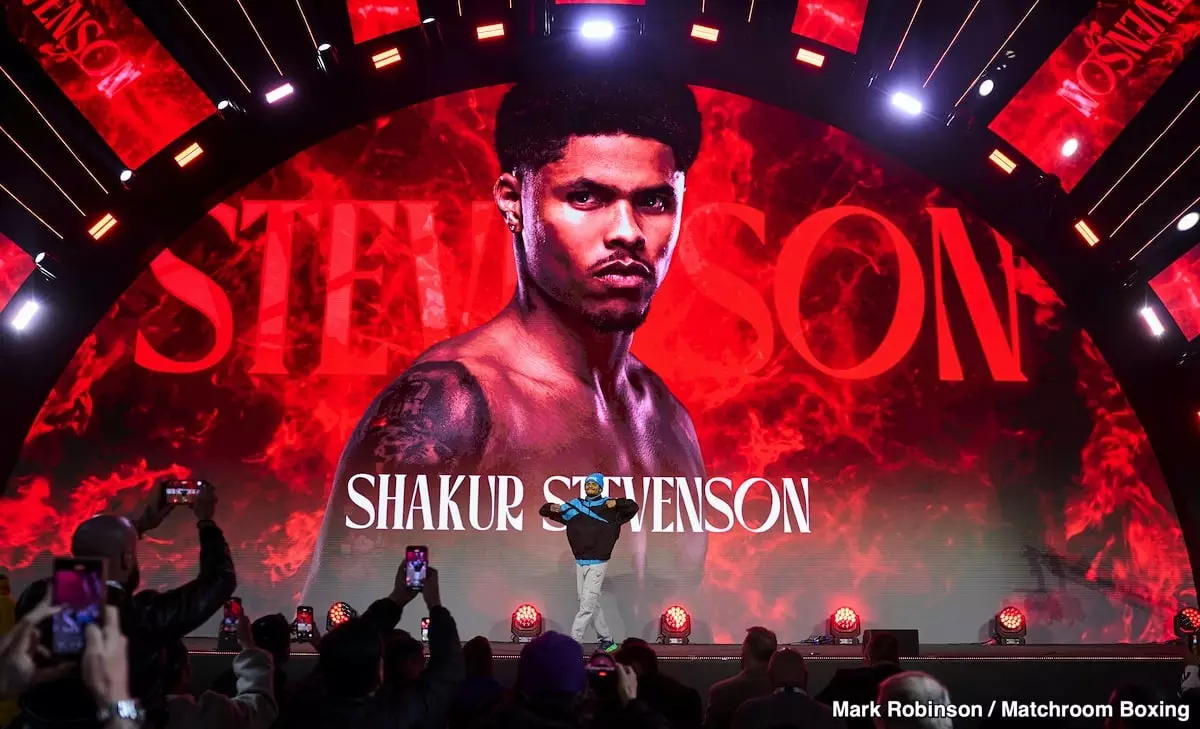In the whirlwind environment of professional boxing, where aspirations meet grueling realities, Shakur Stevenson finds himself grappling with disappointment—not only for the loss of potential bouts but for the shattering of his idolization of Vasily Lomachenko. It’s not just about the missed opportunity to fight; it’s about the deeper wound of feeling ignored by someone he revered as a fighter and legacy-builder. Frustration simmers as he recalls moving up to the lightweight division two years ago, only to feel that Lomachenko, a luminary in the sport, looked past him, dismissing the potential clash that could have further defined both their careers.
Sometimes in sports, stardom and recognition are weighed on an easy scale, and for Stevenson, he was certainly not the household name at that time. Critically, this speaks volumes about the boxing landscape, where popularity often dictates competition, leading to bouts that should resonate with fans being sidestepped for perceived ‘easier fights.’ Lomachenko’s path illustrates a common narrative in combat sports—champions gravitate toward bouts that assure them a better standing rather than risk their legacy against a fighter who isn’t yet a marquee name.
Lomachenko and the Dichotomy of Legacy
In contemplation of Lomachenko as a competitor, there lies a fascinating dichotomy: coupled with stellar accolades is an aura of fragility brought on by age and the inevitable decline in performance. At 37, Lomachenko’s prowess is undeniable, yet there is a tangible sense of caution surrounding his decision-making in the ring. The question of whether he is still a complete fighter remains debated, as his last series of performances against opponents like Devin Haney and George Kambosos Jr. show him losing some of the flair that once set him apart. It’s no surprise that the younger Stevenson is eager to dethrone the old guard as part of a natural evolution.
Instead of watching the narrative unfold, Stevenson seems to suggest that Loma’s reluctance stems from understanding not simply his age but also an awareness of potentially risking favor with a rising talent. The dilemma boils down to the balance of legacy and ambition; does a fighter choose bouts with unproven greatness or settle for a safety net of guaranteed victory against familiar opposition? It’s the cold calculus of professional boxing, one that has kept generations of fighters on their toes.
Stevenson’s Relentless Aspirations
Stevenson’s public sentiment reveals his internal conflict. His staunch admiration for Lomachenko clashes with the harsh reality of perceived dismissals. As he expressed frustration to Ring Magazine, he highlights a notable distinction between his longing for a fight with Tank Davis and the emotional weight carried with the longing for Lomachenko. The sophistication in Shakur’s thinking speaks volumes about his maturity; he comprehends the dynamic that Tank’s stardom creates and recognizes the importance of timing and circumstances in boxing.
Nonetheless, his disappointment with Lomachenko feels more personal—it encapsulates the idealization of a champion and the harsh disillusionment when reality fails to meet expectations. He’s not just aspiring for personal accolades; he’s yearning for validation through competition against someone who personifies the ideals he once aspired to embody.
Technical Skills: The Gripe of a Rising Star
While the psychological struggle unfolds, the technical aspect cannot be ignored. Stevenson’s skills in the ring, while impressive, often run parallel to various critics who observe an imbalance in his offensive strategy. His defense is commendable, but against a complete fighter like Lomachenko, one must question if his passive approach will hold. Bluntly put, Stevenson may risk exposure against a seasoned opponent who thrives on exploiting openings. Lomachenko’s superior boxing intelligence and experience in high-stakes bouts could navigate through Shakur’s repetitive sequences.
Thus, it creates an interesting layer to the ongoing conversation about the future of both fighters. The crux of Stevenson’s situation rests not only in circumstances beyond his control but within his own evolution. To truly become a star, Stevenson must not only call out names but translate his anticipation into a fearsome fighting style that ensures he is taken seriously by those he looks to battle.
This intricate tapestry weaves a narrative that reflects not just individual aspirations and legacies, but also the entire boxing ecosystem. The question looms: Will Stevenson rise to the occasion, or will the generational gap of boxing legends continue to chew up young talent before they can secure their own platform?


Leave a Reply